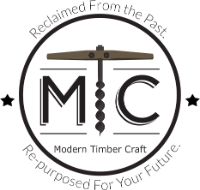When it comes to home design, finding unique and sustainable materials can make a world of difference. Reclaimed hardwood flooring is one such material that not only adds a touch of natural beauty but also promotes eco-consciousness. By repurposing old wood, you can create stunning and distinctive spaces while reducing your carbon footprint. In this blog post, we'll explore the creative uses of reclaimed hardwood flooring and how it can transform your living environment.
Rustic Elegance:
Reclaimed hardwood flooring brings an authentic and rustic charm to any room. Its aged and weathered appearance adds character and tells a story. Install reclaimed hardwood in your living room or bedroom to create a warm and inviting atmosphere. Pair it with vintage furniture and earthy tones to enhance the rustic elegance.
Statement Wall:
Forget traditional wallpaper or paint; a reclaimed hardwood statement wall can be a game-changer. Whether you choose to cover an entire wall or create a focal point behind your bed or fireplace, the unique texture and color variations of reclaimed wood will add depth and visual interest to your space. It's a great way to bring nature indoors while making a bold design statement.

Kitchen Island:
Transform your kitchen into a culinary haven by incorporating reclaimed hardwood flooring into your island countertop. The durability of hardwood makes it an ideal surface for meal preparation, while the reclaimed aspect adds a touch of history to your cooking space. The natural beauty of the wood complements any kitchen style, from modern to farmhouse.

Ceiling Accents:
Create visual interest by installing reclaimed hardwood flooring on your ceiling. This unexpected design element adds a touch of warmth and dimension to any room. Whether you opt for a full ceiling treatment or just a few accent panels, the rich tones and grain patterns of reclaimed wood will draw the eyes upward, making the space feel cozier and more intimate.
Revamping your space with reclaimed hardwood flooring not only offers unique and stunning design options but also contributes to a more sustainable lifestyle. By giving new life to old wood, you're reducing the demand for new resources and minimizing waste. So, if you're looking for a way to add character, warmth, and eco-friendliness to your home, consider the creative uses of reclaimed hardwood flooring. Let your imagination run wild and watch your space transform into a haven of natural beauty and sustainability.
What is reclaimed hardwood flooring?
Reclaimed hardwood flooring refers to wood that has been salvaged and repurposed from old buildings, barns, or other sources. It is carefully deconstructed and processed to create new flooring, retaining the unique characteristics that comes with age and weathering.
Why should I choose reclaimed hardwood flooring over new hardwood?
Choosing reclaimed hardwood flooring offers several advantages. First, it is a sustainable choice as it reduces the demand for new timber, thus minimizing deforestation. Second, the aged appearance and unique character of reclaimed wood adds a rustic charm and sense of history to your space. Lastly, reclaimed hardwood is often more durable and stable compared to newly harvested wood, making it a wise long-term investment.
Can reclaimed hardwood flooring be used in moisture-prone areas like bathrooms or kitchens?
Yes, reclaimed wood flooring can be used in moisture-prone areas with proper care and maintenance. However, it is important to ensure that the wood is properly sealed and protected to prevent water damage. Applying a high-quality sealant and using water absorbing rugs or mats in high traffic areas will help prolong the life of the reclaimed wood floors in such spaces.
How do I maintain reclaimed hardwood flooring?
To maintain reclaimed flooring, follow a few simple steps. Regular sweeping or vacuuming with a soft brush attachment will help remove dirt and debris. Avoid using harsh chemicals or abrasive cleaners that can damage the wood's finish. Instead, opt for a mild wood floor cleaner recommended by the manufacturer. Additionally, it is important to quickly clean up spills to prevent staining or water damage. Lastly, periodically applying a protective coating or re-sealing the wood will help maintain its beauty.

Written by Jake Park
Jake is the founder of Modern Timber Craft and is a seasoned reclaimed woodworking enthusiast with over 20 years experience.


